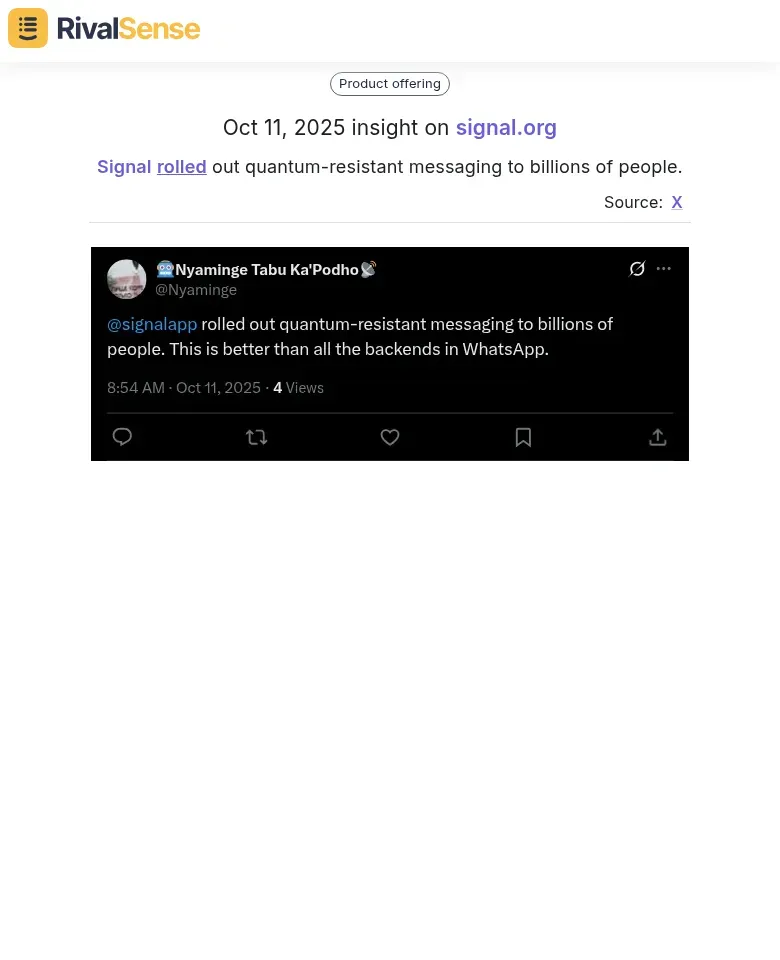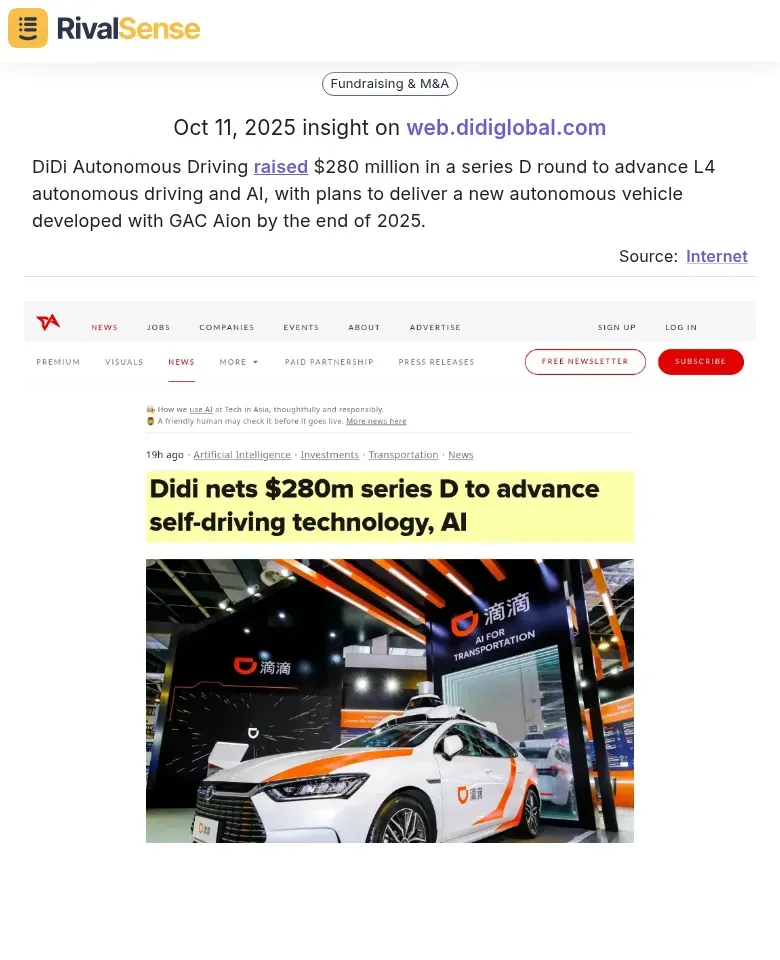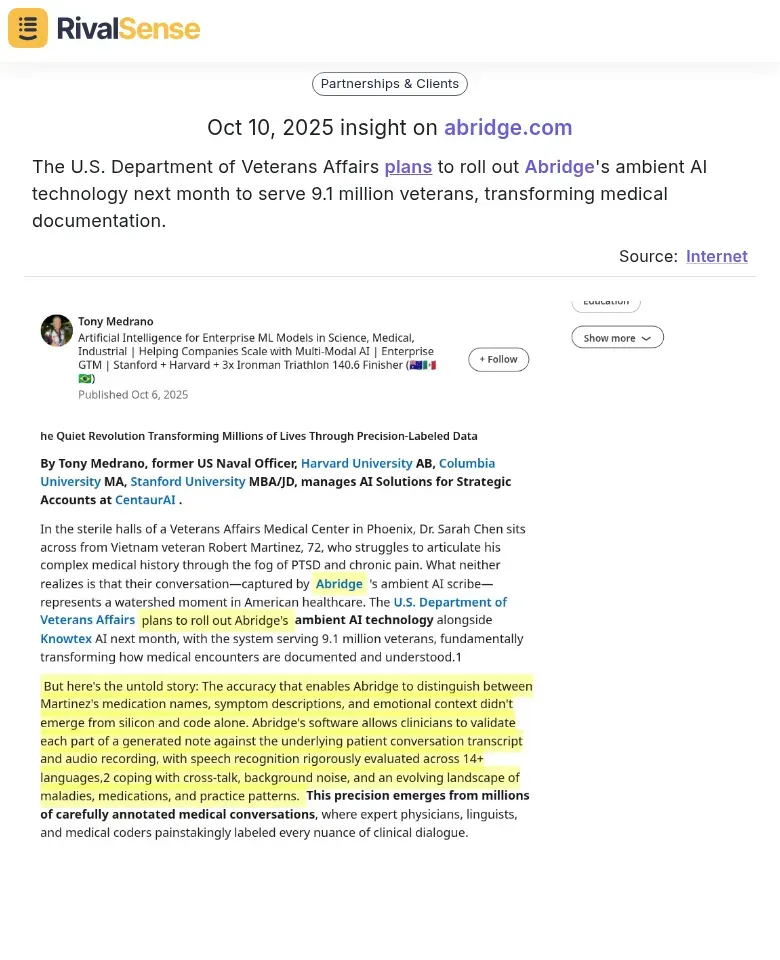How to Analyze Your Competitors' Ads on Google, Facebook & Instagram
By: Sanj Rajput
October 13, 2025 | Time to Read: 8 minutes
Knowledge isn't just power—it's profit! 🚀 In today's competitive landscape, understanding what your competitors are saying to your shared customers on Google, Facebook, and Instagram is no longer optional—it's essential. This guide will walk you through practical, ethical methods to analyze competitor ads, uncover their strategies, and turn those insights into actionable advantages for your B2B business.
Why Analyzing Competitor Ads Matters
In the fast-paced world of digital marketing, staying ahead means knowing what your rivals are up to. By analyzing competitor ads, you can uncover their strategies and refine your own approaches. Competitor ad analysis helps you:
- Decode Messaging & Offers: Identify pain points, solutions, and hooks (e.g., "Free Shipping," "Limited-Time Discount") they emphasize.
- Gain Creative Inspiration: Learn what visuals, videos, or Reels resonate with audiences.
- Uncover Targeting Clues: Infer demographics, interests, and locations from ad language and imagery.
- Reveal Landing Page Secrets: See where ad traffic lands and what makes those pages convert.
- Spot Timing & Cadence: Detect seasonal campaigns, product launches, or promotional rhythms.
- Identify Platform Focus: Determine where competitors invest most (e.g., Google Search, Facebook Feeds, Instagram Reels).
- Track Wins & Losses: Observe which ads persist or fade, informing your own A/B testing.
Ethical Note: This is about observation and inspiration—not theft. Avoid copying ads verbatim or impersonating brands. Use insights to innovate, not imitate.
Part 1: How to Analyze Competitor Google Ads
Google is where intent meets action, making it a critical platform for B2B lead generation. Analyzing ads here reveals keyword strategies and conversion tactics that can inform your own campaigns. Let's explore two effective methods to get started.
Method 1: Incognito Search Analysis
Step-by-Step Checklist ✅:
- Use Incognito Mode: Open Chrome (Ctrl+Shift+N) or Firefox (Ctrl+Shift+P) to avoid personalized results.
- Search Relevant Keywords: Think like your customer. Examples:
- Broad match: "digital marketing services"
- Phrase match: "best SEO agency in Canada"
- Exact match: "website designer Toronto"
- Add locations: "in Vancouver" or "near me"
- Scan for Sponsored Ads: Look for "Sponsored" labels at the top and bottom of search results.
- Analyze Ad Components:
- Headlines & Descriptions: Note hooks (e.g., "Data-Driven SEO") and benefits (e.g., "Free Audit").
- Display vs. Actual URLs: Right-click ad links to copy the destination URL without clicking.
- Ad Extensions: Check for sitelinks, callouts (e.g., "24/7 Support"), or location details.
- Repeat with Variations: Test different keywords and negative terms (e.g., "cheap website design") to see ad triggers.
Pro Tip: Track these searches weekly to spot new campaigns or retired ads.
Method 2: Google's Ad Transparency Centre
This free tool provides a comprehensive view of ads across Google's platforms, including Search and YouTube. It's invaluable for understanding competitor ad history and regional focus.
Steps:
- Visit the Google Ad Transparency Centre.
- Search by URL or Advertiser: Enter a competitor's website or verified name.
- Filter for Insights:
- Set Region to Canada or specific provinces.
- Adjust Date Range to identify long-running winners.
- Select Format (e.g., Search, YouTube) to focus analysis.
- Review Ad History: Analyze past ads for seasonal trends or failed offers.
Practical Tip: Combine incognito searches with the Transparency Centre to see ads in context and identify keyword overlaps.
Part 2: How to Analyze Competitor Meta Ads (Facebook & Instagram)
Meta ads excel at demographic and interest-based targeting, making them ideal for B2B audience engagement. Using the Meta Ad Library, you can dive deep into creative strategies and campaign timing. Here's a step-by-step approach to maximize your insights.
Using the Meta Ad Library
Step-by-Step Guide 📊:
- Go to the Facebook Ad Library.
- Search for Competitors: Enter their Facebook Page name, Instagram handle, or website URL.
- Apply Filters:
- Country: Canada
- Platform: All, Facebook, or Instagram
- Media Type: Image, Video, Carousel, or Reels
- Status: Active or All (for historical data)
- Date Range: Set to analyze campaign timing
- Keywords: Use terms like "sale" or "free consultation" to narrow results.
- Dive into Ad Details:
- Creative: Assess visuals, branding, and hooks.
- Copy: Note messaging, CTAs, and tone.
- Landing Page: See where traffic is directed.
- Ad Metrics: Check start dates and disclaimers.
- Identify Patterns: Look for A/B tests, campaign themes, or format preferences.
Advanced Tip: Search for industry keywords in the Ad Library to discover hidden competitors or niche campaigns that could impact your market.
Part 3: Advanced Tools for Deeper Analysis
While free tools are great for starters, paid options offer historical data and broader tracking capabilities. For B2B leaders, investing in these tools can save time and provide a competitive edge. Here's a comparison to help you choose:
| Tool Type | Examples | Key Features | Best For |
|---|---|---|---|
| SEO/Ad Platforms | Semrush, SimilarWeb | Estimated ad traffic, keyword bidding, display networks | Google Ads competitor analysis |
| Meta Ad Specialists | AdSpy, PowerAdSpy | Advanced filtering, historical data, engagement estimates | Deep social ad analysis |
| Broad Campaign Trackers | Pathmatics, Sensor Tower | Display/video ad insights across the web | Large-brand campaigns |
Consider RivalSense: For businesses seeking a streamlined approach, tools like RivalSense automate competitor tracking across 80+ sources—including ad campaigns—and deliver weekly reports on product launches, pricing changes, and media mentions. This saves time and ensures you never miss a key update.
Beyond Ads: How Broader Competitor Insights Inform Strategy
Ad analysis is just one piece of the puzzle; comprehensive competitor intelligence covers product launches, funding, partnerships, and regulatory moves. These insights can reveal strategic shifts and help you anticipate market trends. For example, tracking non-ad activities allows you to adjust your business strategy proactively and identify new opportunities.
Here are real-world examples from RivalSense that demonstrate the value of holistic competitor tracking:
-
Signal's Quantum-Resistant Messaging Rollout

Signal rolled out quantum-resistant messaging to billions of people. This insight is valuable because it highlights product innovation in security, enabling you to assess competitive threats and adapt your own technology roadmap to stay ahead. -
DiDi Autonomous Driving's Funding Round

DiDi Autonomous Driving raised $280 million in a series D round to advance L4 autonomous driving and AI, with plans to deliver a new autonomous vehicle developed with GAC Aion by the end of 2025. Understanding funding events helps you gauge competitor growth potential and R&D investments, informing your strategic planning and resource allocation. -
Abridge's Partnership with U.S. Department of Veterans Affairs

The U.S. Department of Veterans Affairs plans to roll out Abridge's ambient AI technology next month to serve 9.1 million veterans, transforming medical documentation. Insights into partnerships and regulatory approvals can reveal expansion into new markets, helping you identify potential collaborations or competitive responses in your industry.
Tools like RivalSense automate the tracking of such insights, delivering weekly reports that keep you informed without manual effort.
Turning Insights into Action: A Strategic Checklist
Turning competitor ad analysis into actionable steps is key for B2B success. By systematically applying your findings, you can outmaneuver rivals and capture market share. Use this checklist to guide your strategy:
- Spot Gaps & Own Them: If competitors ignore a pain point or lack local angles, fill the void with stronger messaging.
- Benchmark & Differentiate: Know market standards, then emphasize your unique value (e.g., quality, speed, Canadian focus).
- Refine Targeting: Use ad insights to hone Facebook, Instagram, or Google audience targeting.
- Boost Creativity: Adapt successful formats authentically; test new hooks and visuals.
- Optimize Landing Pages: Make pages faster, clearer, and more mobile-friendly than competitors'.
- Time Campaigns Wisely: Align launches with seasonal patterns or competitor gaps.
Conclusion: Master Competitor Ad Analysis
Analyzing competitor ads is a powerful way to stay ahead in today's competitive B2B markets. By combining free tools like the Google Ad Transparency Centre and Meta Ad Library with advanced platforms, you can decode strategies, identify opportunities, and craft campaigns that resonate with your audience.
For ongoing monitoring, consider solutions like RivalSense, which tracks competitor moves—from ads to product updates—across websites, social media, and registries, delivering actionable insights in weekly reports. Try RivalSense for free today at https://rivalsense.co/ to get your first competitor report and start turning insights into advantages!
Remember: Ethical analysis is about learning and innovating. Use these insights to serve your audience better, not to copy. Now, go out there and turn competitor intel into your competitive edge! 💪
Share this post to help others level up their ad analysis!
📚 Read more
👉 Build Key Account Performance Dashboards for Fintech B2B
👉 How Xometry's Mobile App Launch Prompted Competitor Innovation
👉 Data-Driven Website Insights: Boost Key Account Performance
👉 Key Account Tracking Customization: Strategic Insights from Penneo vs. Competitors
👉 Leverage Competitor Pricing Insights from Customer Reviews
